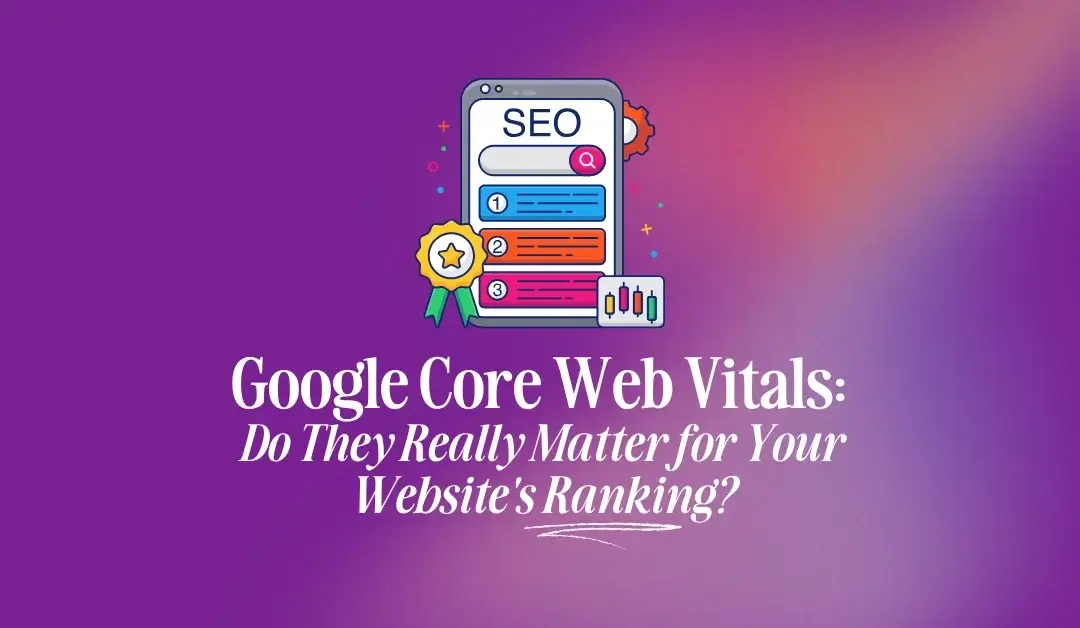If you've ever looked into how to get your website to rank higher on Google, you may have heard of something called “Core Web Vitals” (CWV). It sounds fancy, but what does it actually mean for your website? Is it the key to getting your site to the top of the search results? Let’s break it down in simple terms.
What Are Core Web Vitals?
Core Web Vitals are a set of measurements that Google uses to see how well your website performs. Think of them as health check-ups for your website. They focus on three main things:
- Loading Speed (Largest Contentful Paint, or LCP): How quickly your website's main content loads.
- Interactivity (First Input Delay, or FID): How quickly your website responds when someone tries to click on something.
- Stability (Cumulative Layout Shift, or CLS): How much things move around on your page while it's loading.
If your website passes these tests, Google considers it to be providing a good user experience, which is important to keep your visitors happy.
Does Google Use CWV to Decide Rankings?
The short answer is yes, but there's a catch. Core Web Vitals do play a role in Google rankings, but they aren’t as powerful as you might think. Improving your CWV scores can help you, but it's not going to instantly shoot your site to the top of Google. Google has said CWV is more like a tie-breaker – if two websites have similar content and value, but one loads faster and is more stable, that one might get the edge in rankings.
John Mueller, a Google spokesperson, has explained that while CWV is part of what Google uses to rank sites, it’s not as important as other factors like the content of your website and how well it matches what people are searching for. In other words, your website could be lightning-fast, but if it doesn't answer the questions people have, it still won't rank well.
What Does This Mean for Your Website?
Google’s advice is clear: don’t obsess over getting perfect scores for CWV. Instead, focus on providing a good overall experience for your visitors. Sure, make your website fast and responsive, but also make sure the content is helpful, relevant, and easy to understand. Improving CWV can be a good move for making your site more user-friendly, but it’s not worth stressing over every little point if your content isn’t up to par (source).
Think of CWV as making sure your store is easy to walk around in. If people have to wait forever to get inside or things keep falling off the shelves, they might leave. But just having clean aisles isn't enough – you need to have what people are looking for too!
The Bigger Picture
When Google talks about rankings, they consider hundreds of factors. Page speed and CWV are just a few of these. The most important part is still the quality of your content and how useful it is to the person searching. Even if your CWV scores aren’t perfect, you can still rank well if your site delivers valuable information.
So, if you’re managing a website and trying to figure out where to put your time and energy, here’s the best approach:
- Make sure your website isn’t frustrating to use. Check that it loads reasonably fast, doesn’t have buttons that are hard to click, and stays stable as it loads.
- Create great content that answers your visitors’ questions. This will help you rank well, even if your CWV scores aren’t perfect.
Final Thoughts
Core Web Vitals are important, but they’re not everything. The real key to getting your website to rank well is creating content that’s helpful and engaging while also making sure your website is pleasant to use. Aim for a good balance – you don’t need a perfect score, but you do need to keep your visitors happy.
If you have any questions or want help making your website better, feel free to reach out. We're here to make sure your website isn’t just fast, but also fantastic for your visitors!

Stop treating your WordPress site like a side project when your entire business depends on it working flawlessly. You didn't build your expertise to become a backup-obsessed, update-anxious website manager – yet that's exactly what's happening while your competitors focus on growth.
I'm Jeane Sumner, and Website HQ eliminates that distraction completely. We armor, optimize, and monitor your site like the business-critical asset it is. Schedule your rescue call and get back to what you do best.

